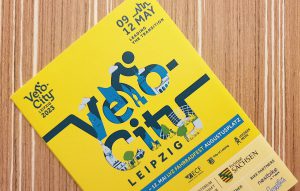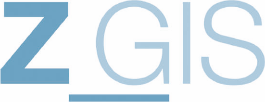 From May 9-12 2023, the Velo-City conference took place in Leipzig, Germany. It is a key event for the domain of cycling mobility, bringing togehter experts from science, planning as well as the public sector and politics. Within a session by Cylcle Competence Austria, Christian Werner presented data and methods we use at PLUS Mobility Lab to gain systemic understaning of cycling mobility. One key element we presented is the open source software NetAScore that we made available on Github recently. It provides an automated workflow for assessing bikeability for a given area of interest, using e.g. OpenStreetMap data. NetAScore adds a numeric indicator to each road segment that indicates its suitability for cycling. This indicator is essential input to many of our advanced analyses and can now be used universally, following the simple and permissive MIT License. Many inspiring discussions with other conference participants were triggered following up on the presented models and methods.
From May 9-12 2023, the Velo-City conference took place in Leipzig, Germany. It is a key event for the domain of cycling mobility, bringing togehter experts from science, planning as well as the public sector and politics. Within a session by Cylcle Competence Austria, Christian Werner presented data and methods we use at PLUS Mobility Lab to gain systemic understaning of cycling mobility. One key element we presented is the open source software NetAScore that we made available on Github recently. It provides an automated workflow for assessing bikeability for a given area of interest, using e.g. OpenStreetMap data. NetAScore adds a numeric indicator to each road segment that indicates its suitability for cycling. This indicator is essential input to many of our advanced analyses and can now be used universally, following the simple and permissive MIT License. Many inspiring discussions with other conference participants were triggered following up on the presented models and methods.
The importance of open data for many applications in cycling mobility has been stressed throughout the conference. One session had a specific focus on the use of open data for infrastructure planning. For example, Ane R. Vierø shed light on reproducible methods for assessing data quality of OpenStreetMap. As methods and models use such data as the foundation for deriving information and to provide input for decision making, considering data quality is an important aspect. As of the repeatedly occuring theme during Velo-City 2023 of how important (open) cycling data is, I (CW) missed some more focus on existing and upcoming methods that actually make use of such data and generate added value. Some methods were presented. However, most of these were not (fully) open and thereby limiting their re-use. As a consequence, the same or similar methods have to be re-invented or at least re-implemented again by several stakeholders. Furthermore, an open, transparent approach is desirable for methods that are used in decision making. For scientific methods, open science should be the default anyways. This not only helps to ensure reproducibility, but also allows for collaborative improvement of methods while reducing inefficiencies caused by replication of existing but closed-source methods.
A more general discussion revolved around inclusive mobility and also dealt with the question of how inclusive conferences such as the Velo-City are. Several speakers of different geographic and domain background raised awareness for these important topics.
Although conference participants and the local cycling community first were tested a bit regarding their weather-resistance, the bike parade through Leipzig on Wednesday evening found great participation. While the bike parade was a nice social event, the technical visit revolving around cargo bicycles succeeded in opening some new perspectives.
Another highlight of the conference program was the session on cost-benefit analysis. The presented approaches ranged from assessing economic impact e.g. of bicycle toursim to a broader perspective including societal costs and benefits associated with injuries and public health. These offer great potential for integration with methods we currently develop at PLUS Mobility Lab and we are looking forward to potential future perspectives on this.
All in all, the conference served as a valuable platform to exchange thoughts on methods, prevalent problems and future perspectives on cycling and active mobility. The variety of topics mirrored the multifaceted potential and character of cycling and active mobility.


Leave A Comment